Home » Uncategorized
Category Archives: Uncategorized
Graduate Student Spotlight: Mo Hashemian
Graduate Student Spotlight: Mo Hashemian
This summer’s graduate student spotlight is on Mo Hashemian! Over the past year, Mo has accomplished numerous achievements. He was recently awarded the ARCS Fellowship (Achievement Rewards for College Scientists) for outstanding academics. At the Miller Symposium Poster Session, Mo received the poster award given out by ACS Pharmacology and Translational Sciences. We were also fortunate to hear about his research updates at both the third year seminar and joint group meeting, where Mo discussed the role of metal cofactors in MUTYH function and how he’s been adjusting the protein purification process to retain these cofactors within the structure. We’re excited to see the developments Mo makes on his project moving forward!
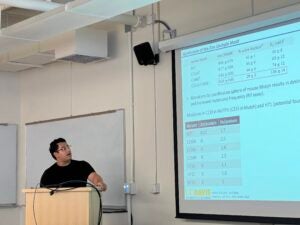

Thank you Carlos!
We bid farewell to our Postdoctoral Researcher, Carlos Trasviña-Arenas, as he begins his own lab in the Center for Research and Advanced Studies of the National Polytechnic Institute in Mexico City. His lab will be investigating DNA repair and chronic degenerative diseases. We thank Carlos for all his contributions to the MUTYH project, and wish him the best of luck in Mexico!
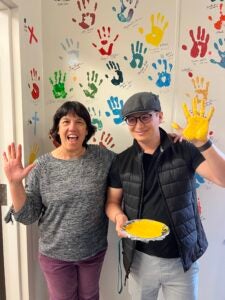
Graduate Student Spotlight: Elizabeth Lotsof
Graduate Student Spotlight: Elizabeth Lotsof
11/1/2021
Meet Elizabeth Lotsof, a Graduate Student in Sheila David’s lab at UC Davis in the Department of Chemistry seeking to earn her Ph.D. in Chemistry. Liz focuses on DNA repair enzyme NEIL in her research. Liz is also a mentor to undergraduate researchers, a reliable teammate, and has made significant contributions to the Department of Chemistry at UC Davis through her mentorship, outreach, and dedication to peer graduate students.
Watch this video to learn about her work, about who she looks up to in science, how her graduate study has helped shape her future, and more!
Liz’s Bio on the David Lab Website:
The David Lab Website:
https://davidlab.ucdavis.edu/
#elizabethlotsof #chemistry #dna #ucdavis #graduate #graduateschool #neil #dnarepair #davidlab #thedavidlab #sheiladavid #undergraduateresearch #mentorship #womeninscience #lizlotsof #ucdchemistry #chemicalbiology
Recent Article Published by the David Lab: The DNA repair enzyme MUTYH potentiates cytotoxicity of the alkylating agent MNNG by interacting with abasic sites.
Recent Article Published by the David Lab at UC Davis:
The DNA repair enzyme MUTYH potentiates cytotoxicity of the alkylating agent MNNG by interacting with abasic sites
Journal of Biological Chemistry
Inherited defects in the DNA repair gene MUTYH lead to cancer, proof that MUTYH has a critical role in preventing cancer in normal cells. In a new study from the David Lab, MUTYH is shown to have a new role that implicates it in the response to a common class of chemotherapy drugs, alkylating agents (https://www.jbc.org/content/early/2020/01/30/jbc.RA119.010497).
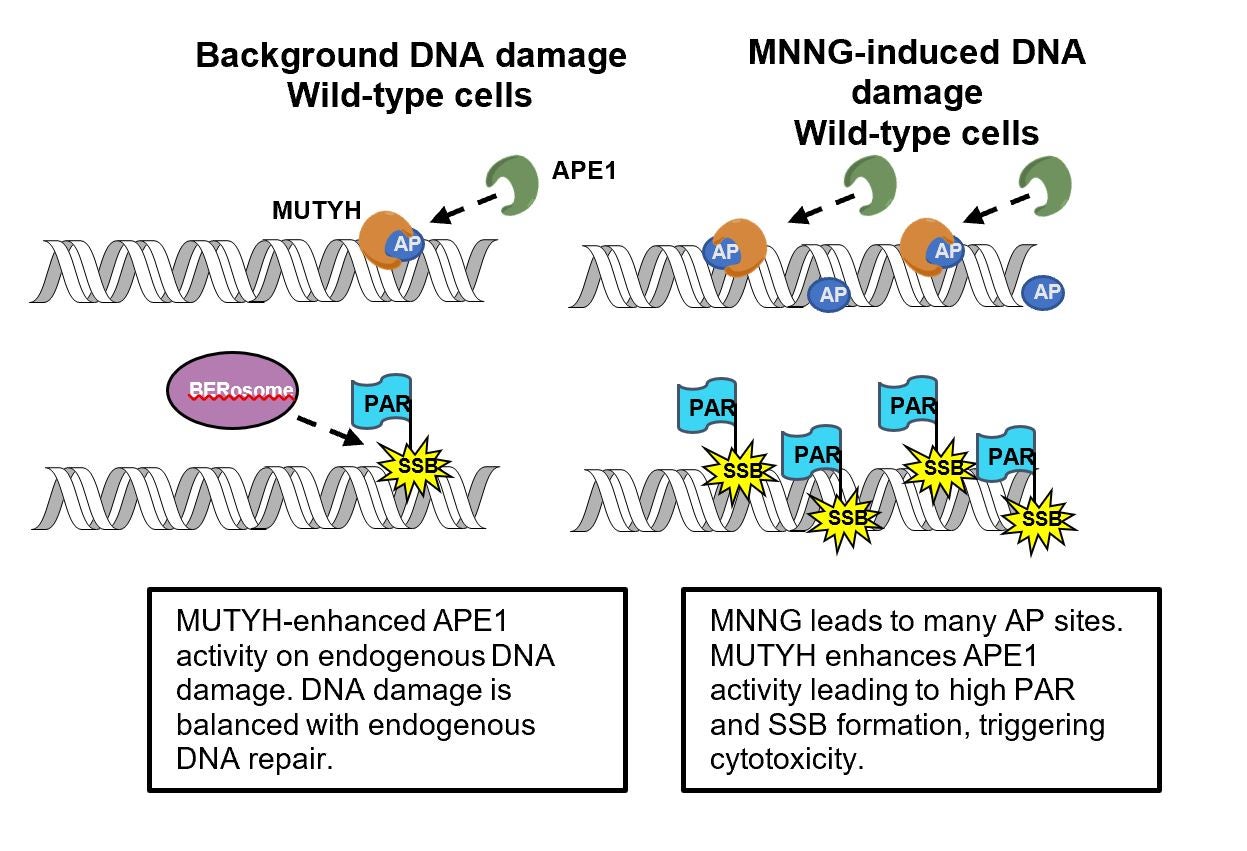
Cancer cells evolve resistance to chemotherapy drugs by a number of mechanisms, including upregulating DNA repair enzymes such as BRCA1, which helps cancer cells survive DNA damaging chemotherapy agents. Surprisingly, MUTYH does not help repair alkylating agent DNA damage, but instead enhance alkylating agent toxicity. This study uncovers the underlying molecular mechanism of this activity, which involves MUTYH stimulating cells to create more toxic DNA repair intermediates. By uncovering the molecular mechanism, this research suggests that MUTYH has both a role in preventing DNA mutations that cause cancer, and a separate role in helping kill cancer cells that are treated with chemotherapy drugs, thus the loss of MUTYH is a “double-whammy”. Tests to determine if cancer patients have normal versus functionally-deficient MUTYH may alter chemotherapy treatment choices if these results can be generalized to clinical practice.
Citation:
Raetz, A.G.; Banda, D.M.; Ma, X.; Xu, G.; Rajavel, A.N.; McKibbin, P.L.; Lebrilla, C.B.; David, S.S. The DNA repair enzyme MUTYH potentiates cytotoxicity of the alkylating agent MNNG by interacting with abasic sites. J. Biol. Chem. 2020.
Keywords:
#sheiladavid #davidlab #mutyh #thedavidlab #ucdavischemistry #cytotoxicity #alkylatingagent #mnng #dna #dnarepair #muty #ucdavis #chemistry #biologicalchemistry #chembio #journalofbiologicalchemistry
David Lab Member Robert Van Ostrand receives Crown Royal Award at Sacramento Kings Salute to Service Night
David Lab Member Robert Van Ostrand was recognized as the Honoree Veteran and received the Crown Royal Award at the Sacramento Kings Salute to Service Night. Robert’s service in the United States Marine Corps from 2005 – 2013 included a deployment to Iraq as an active duty Infantryman, as part of Operation Iraqi Freedom in 2007, which was followed by a transition to Data Networking Specialist as a Reservist in 2010. Robert was selected for this award for his community service for local veterans and for the City of Davis.
#davidlab #ucdavis #veterans #vfw6949davis #sheiladavid #robertvanostrand #davis #goags #ucdavischemistry #sacramentokings
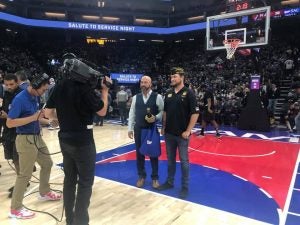
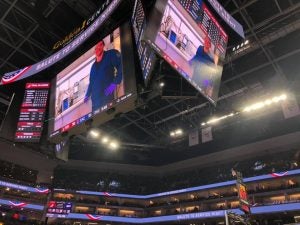
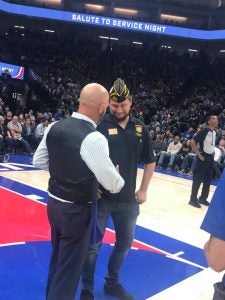
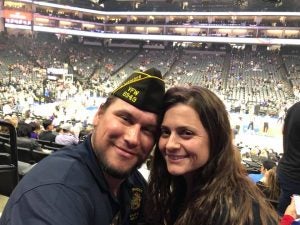
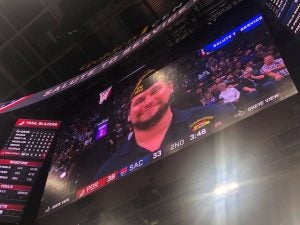
New Article Published: When you’re strange: Unusual features of the MUTYH glycosylase and implications in cancer.
New Article Published: When you’re strange: Unusual features of the MUTYH glycosylase and implications in cancer.
Think MUTYH is a simple adenine glycosylase? Think again. Explore the dizzying diversity of MUTYH interactions to DNA damage response proteins and their implications in cancer in our lab’s newest review by Alan Raetz and Sheila David.
Click here or on the image to link to the article!
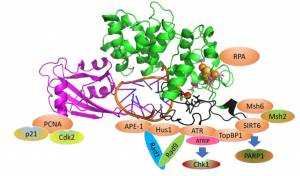
Raetz, A.G.; David, S.S. When you’re strange: Unusual features of the MUTYH glycosylase and implications in cancer. DNA Repair. 2019, 80, 16-25.
#DavidLab #MUTYH #Muty #DNArepair #glycosylase #DDR #cancer #ucdavis #chemistry #chemicalbiology #AlanRaetz #SheilaDavid
The David Laboratory attends CBBA 2019 at UCSF
Members of Sheila David’s Laboratory at UC Davis attended the Chemical Biology in the Bay Area (CBBA) Day on June 1st, 2019, which was hosted by UCSF in San Francisco. This event brought in graduate student presenters from UC Davis, UC Santa Cruz, UC Berkeley, and UCSF. The keynote speaker was Anthony Ogawa from Merck. Merve Demir from our lab presented a research poster titled, “Elucidating Additional Features of 8-Oxo-guanine Recognition and Adenine Excision Mechanism by the DNA Glycosylase MutY.” The speakers were consistently excellent throughout the day, touching on a broad range of topics within the wide world of chemical biology. We all had a great time. Cheers to all of the presenters and volunteers that helped run the conference!

Undergraduate Student Spotlight: Madeline Bright
Meet UC Davis Undergraduate Researcher Madeline Bright in our lab’s new Undergraduate Student Spotlight Video! Hear about how she got into undergraduate research and how it will help her career. Undergrads – there is solid advice included on how to join a research lab if you have been thinking about it. Madeline wants to enter into an M.D.-Ph.D. program after her undergraduate work, and is very well on her way towards that goal.
Madeline is a 2nd year Biological Sciences student working in the David Laboratory in the Chemistry Department at UC Davis, and has been with us for over one year. Madeline recently won the 2019 Francesca Miller Undergraduate Research Award at the 2019 Miller Symposium at UC Davis.
Here’s to a Bright future!
Beal Lab: There is an Easter Egg in this video for you! Enjoy!
#research #UCDavis #DavidLab #chemistry #dnarepair #undergraduateresearch #millersymposium #biologicalsciences #MadelineBright
The David Lab attends the 2019 Miller Symposium at UC Davis
The Annual R. Bryan Miller Symposium at UC Davis brings top speakers from the field of chemical biology to share cutting edge research results and perspectives on the future of chemical biology research. Dr. Sheila David is the Miller Symposium Committee Chair, and directs the event with the support of faculty, staff, and students. The David Lab attended the 2019 Miller Symposium at UC Davis in full force.
This year’s theme of the Miller Symposium was “Chemistry and Biology of Pain,” and included speakers such as Justin DuBois of Stanford, Alanna Schepartz of Yale, Jon Sack of UC Davis, Ann Weber of Kallyope & Merck, and more.
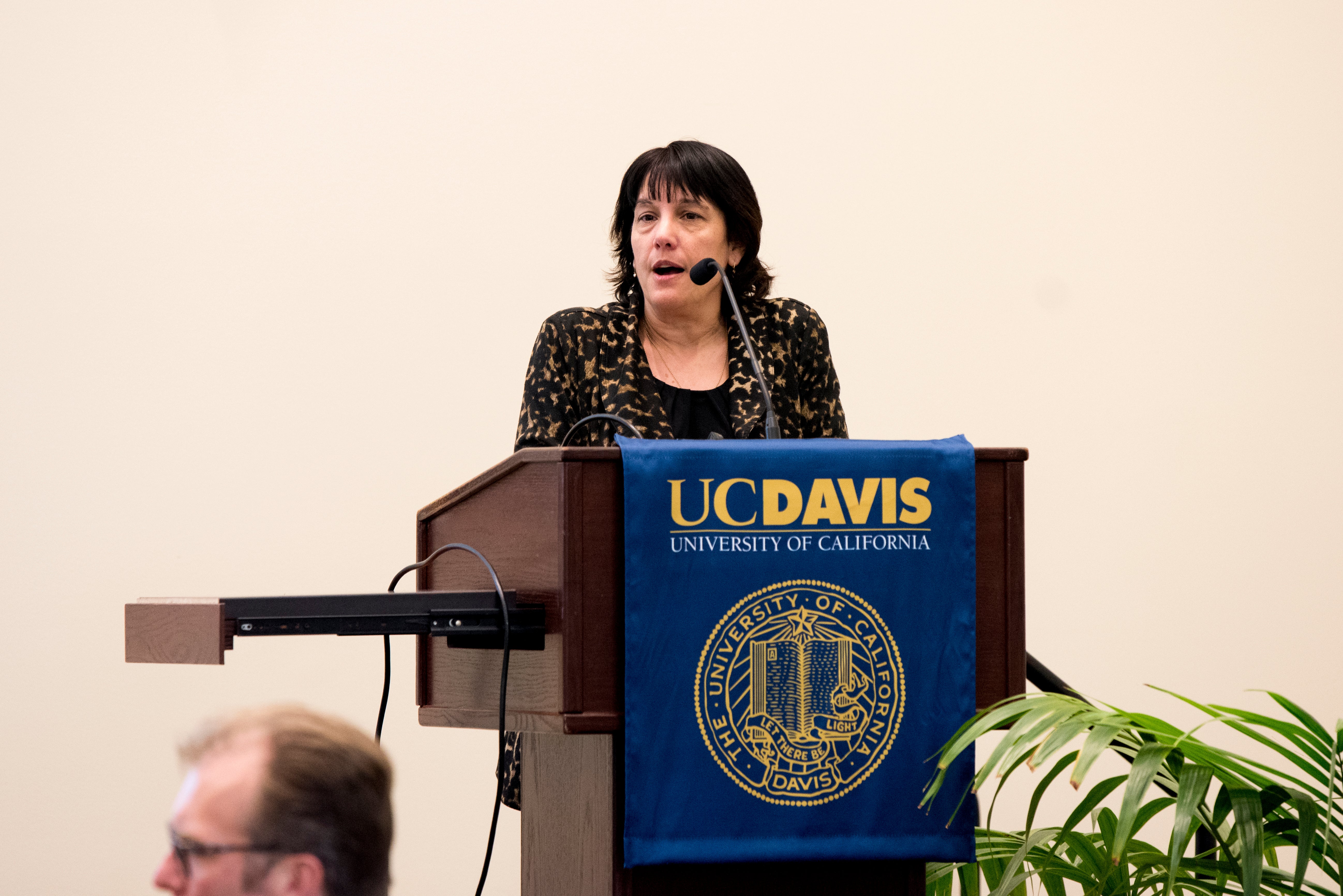
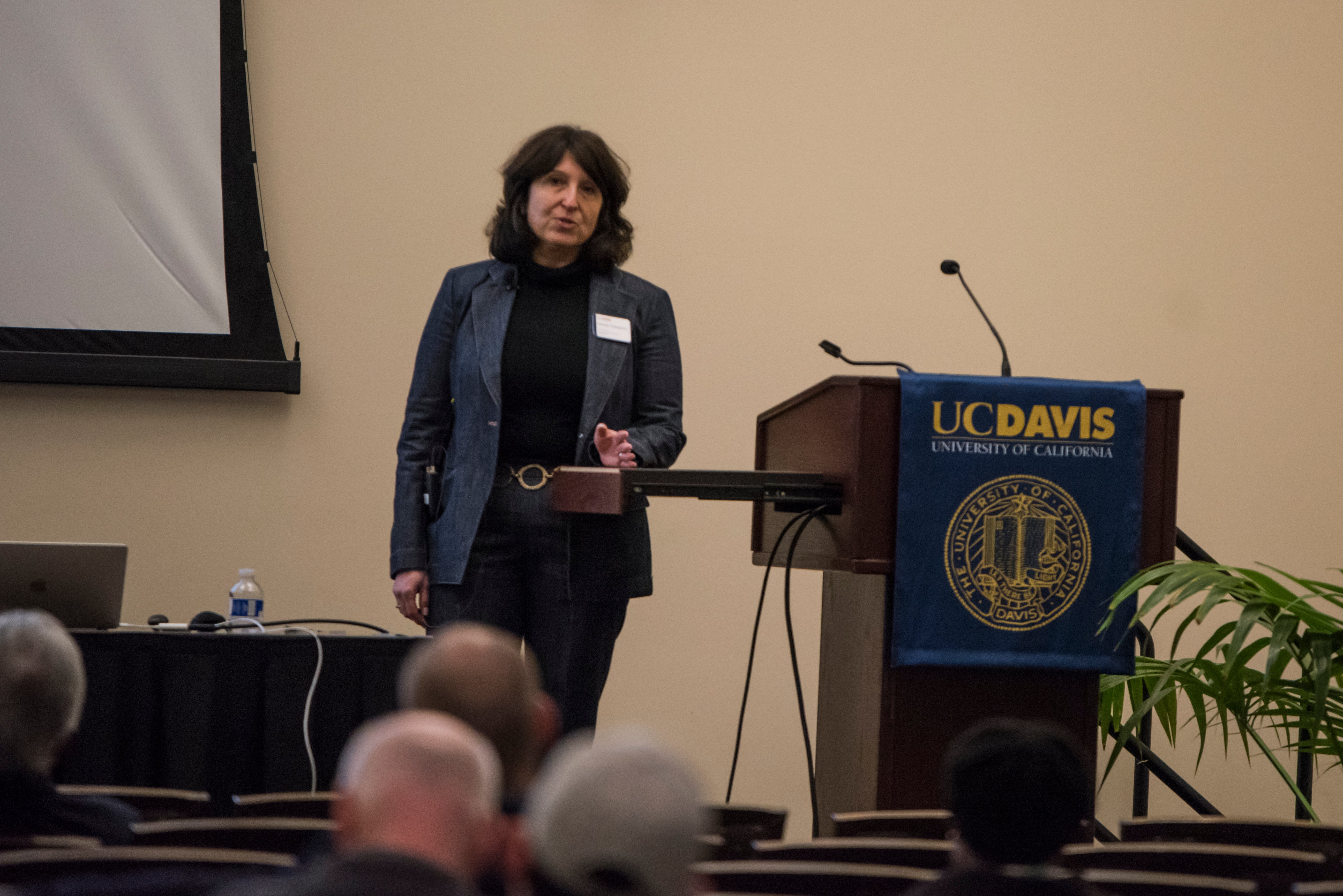
Chandrima Majumdar of the David Lab played a significant role in supporting and organizing the event, and received recognition for her contribution at the awards ceremony.

The Miller Symposium also includes a poster session where researchers present their latest findings. Liz Lotsof and Savannah Conlon of the David Lab shared their work at the poster session, which involves DNA glycosylases NEIL1 and NEIL3 and their ability to recognize and excise oxidative damage located in G-quadruplexes.
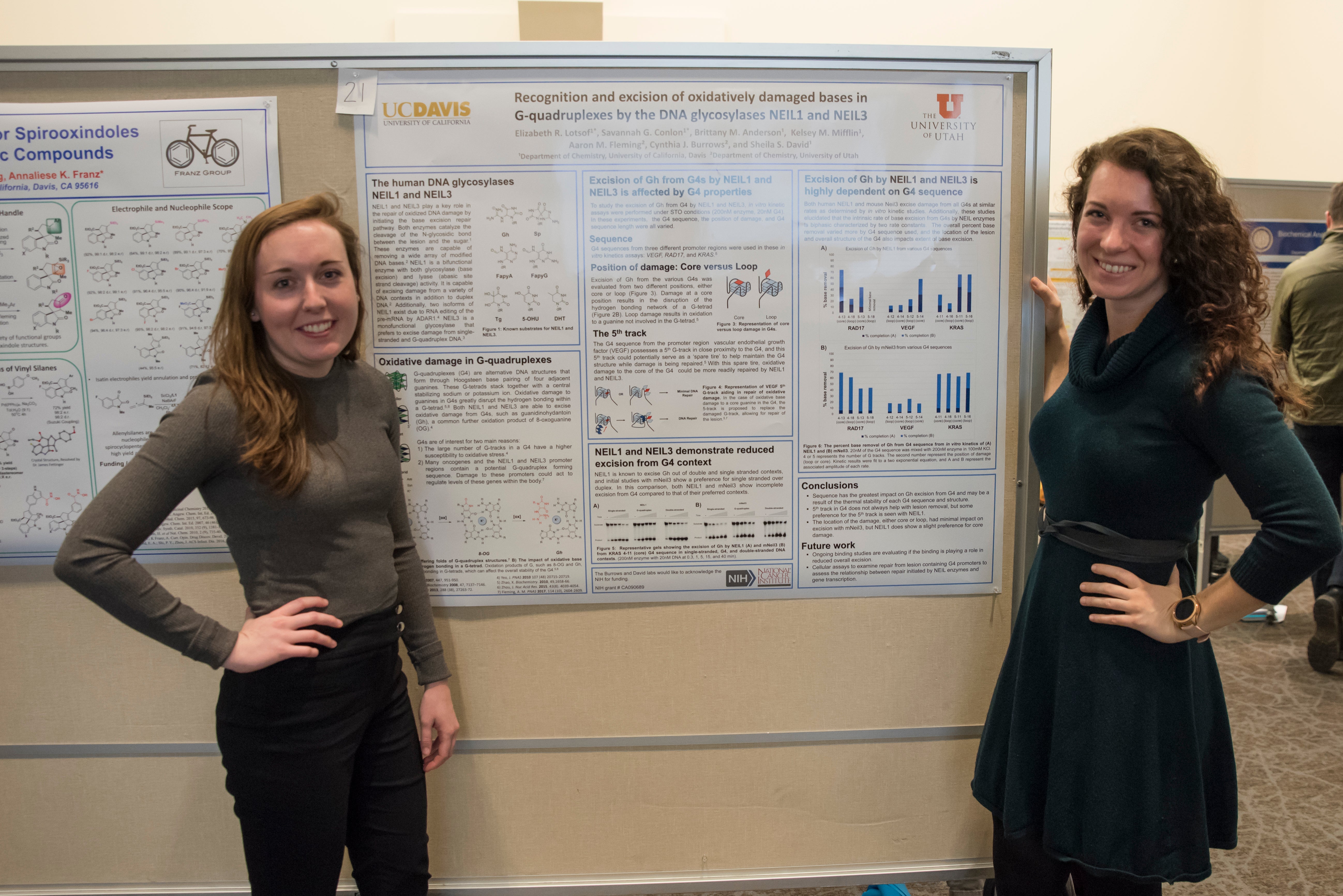
Undergraduate Researcher Madeline Bright of the David Lab won the 2019 Francesca Miller Undergraduate Research Award for her work involving the synthesis and duplex stability analysis of previously unreported and rationally designed modified oligonucleotides developed to act as substrates for DNA repair protein MutY in enzyme assays utilized by the David Lab. The modified oligonucleotides synthesized in this project will help elucidate the target recognition mechanism of MutY. Madeline has been a member of the David Lab since January 2018 and works with 3rd year PhD student Robert Van Ostrand. Congratulations Maddy!
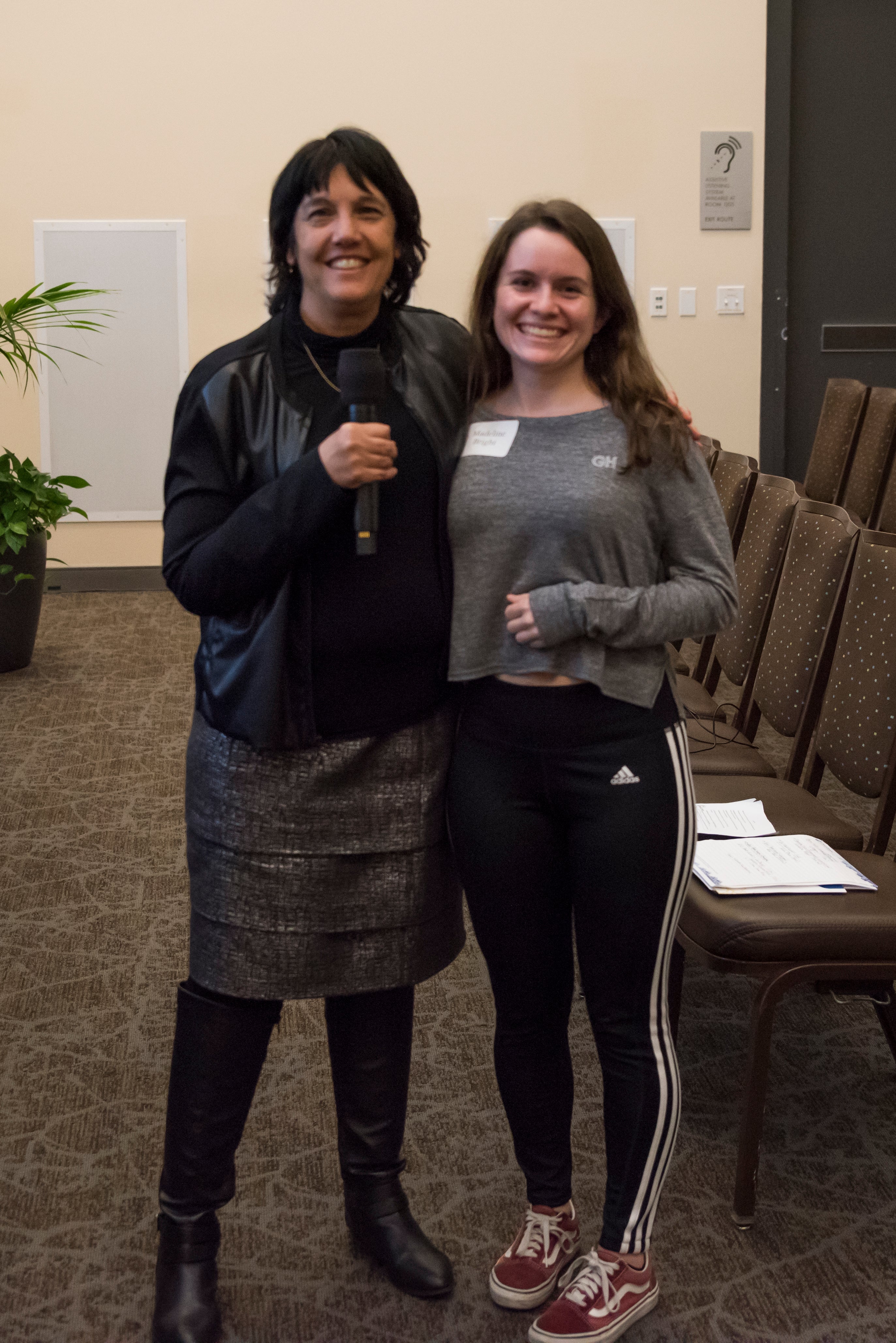
The David Lab @ Miller 2019
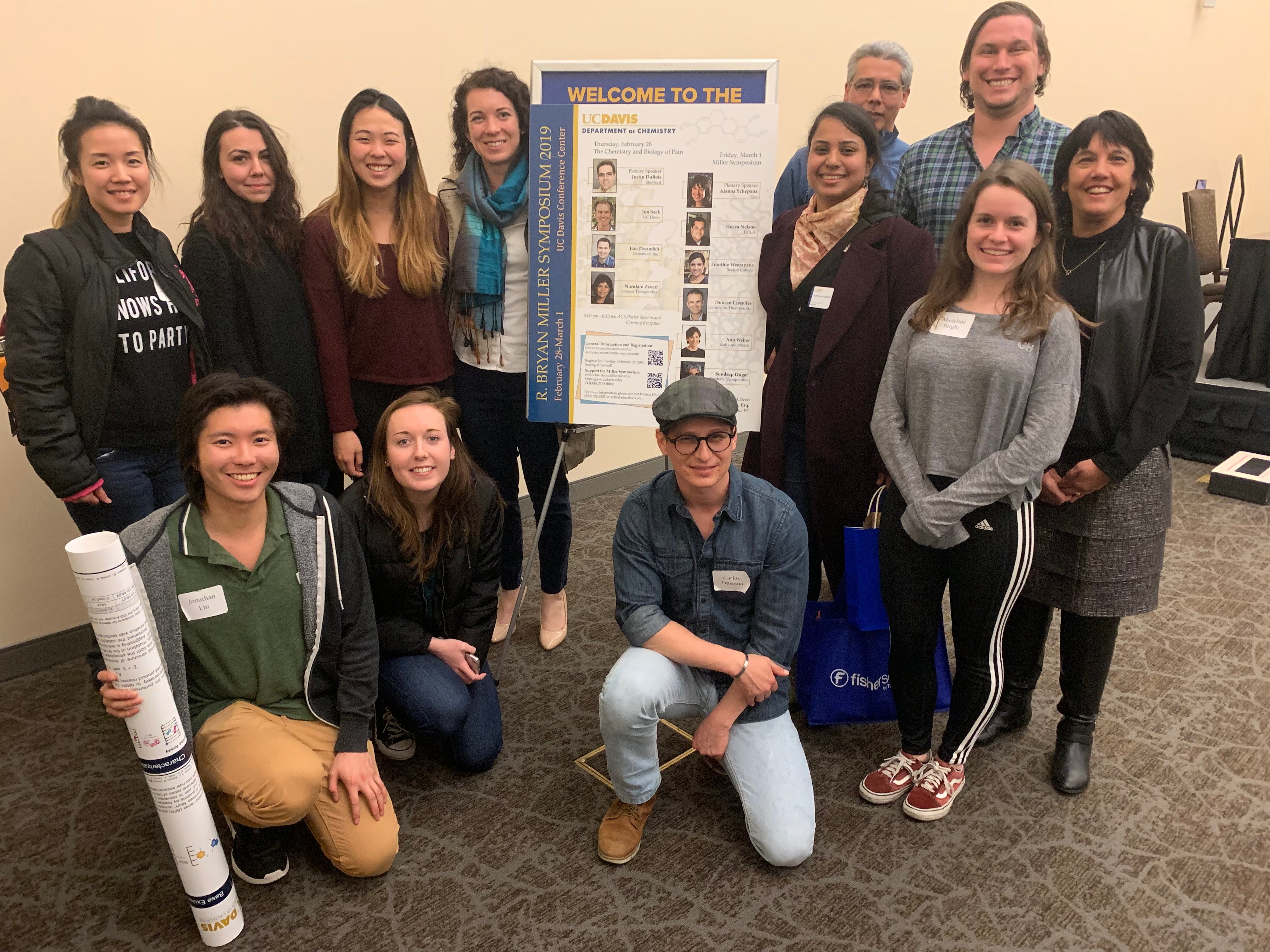
Thank you to Jackson Zhu for taking the photos.
Keywords:
#MillerSymposium #UCDavis #ChemicalBiology #DNARepair #DavidLab #SheilaDavid #UCDavisChemistry
New Manuscript Published: The Zinc Linchpin Motif in the DNA Repair Glycosylase MUTYH: Identifying the Zn2+ Ligands and Roles in Damage Recognition and Repair.
New Manuscript Published: The Zinc Linchpin Motif in the DNA Repair Glycosylase MUTYH: Identifying the Zn2+ Ligands and Roles in Damage Recognition and Repair.
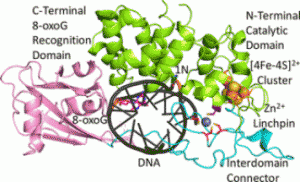
A recent publication from the David, Siegel and Lim (Academia Sinica, Taiwan) labs (Nuñez et al., JACS, 2018) provides insight into the coordination sphere and critical role of a Zn2+ metal binding site in the DNA repair glycosylase MUTYH. Genome database mining and sequence alignment of MUTYH orthologs, along with computational modeling, identified and supported Zn2+ ligation by four Cys residues. Three of the Cys residues lie in an interdomain connector region unique to mammalian MutY enzymes, while the 4th Cys is located in close proximity to the Fe-S cluster DNA binding domain. The functional consequences of reduced Zn2+ chelation on MUTYH-mediated DNA repair activity evaluated using a battery of in vitro and cell-based assays revealed the importance of Zn-coordination in recognition of the damaged DNA substrate. The critical nature of the “Zinc Linchpin Motif” suggests additional functions unique to higher organisms in damage signaling and crosstalk with other DNA repair pathways.
More information at https://pubs.acs.org/doi/10.1021/jacs.8b06923.
Source:
J. Am. Chem. Soc. 2018, 140, 13260-13271.
Keywords: #Muty #Mutyh #BER #DNA #DNARepair #ZincLinchpinMotif #Zn2+ #8OG #DavidLab #UCDavis